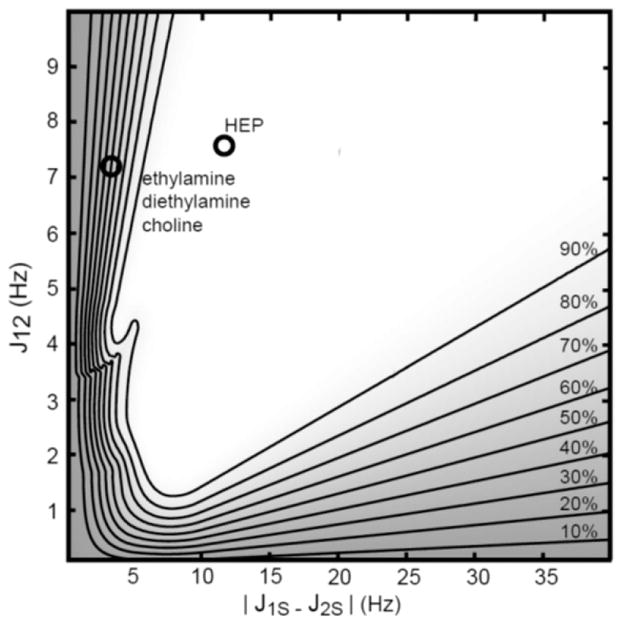Figure 2.
Polarization yield as a function of homonuclear proton coupling (J12) and heteronuclear coupling asymmetry (|J1S − J2S|) for hyper-SHIELDED. Contour levels are marked at right and superposed onto a gradient map calculated at an isotropic resolution of 0.1 Hz. For each point, the density matrix equations were inverted to find τ intervals (ti, Figure 1) corresponding to maximum polarization and normalized to the global maximum. Annotated coordinates refer to the test molecule (HEP) and a sample of 15N parahydrogen addition products with small asymmetries that would be expected to differentially benefit from hyper-SHIELDED.

